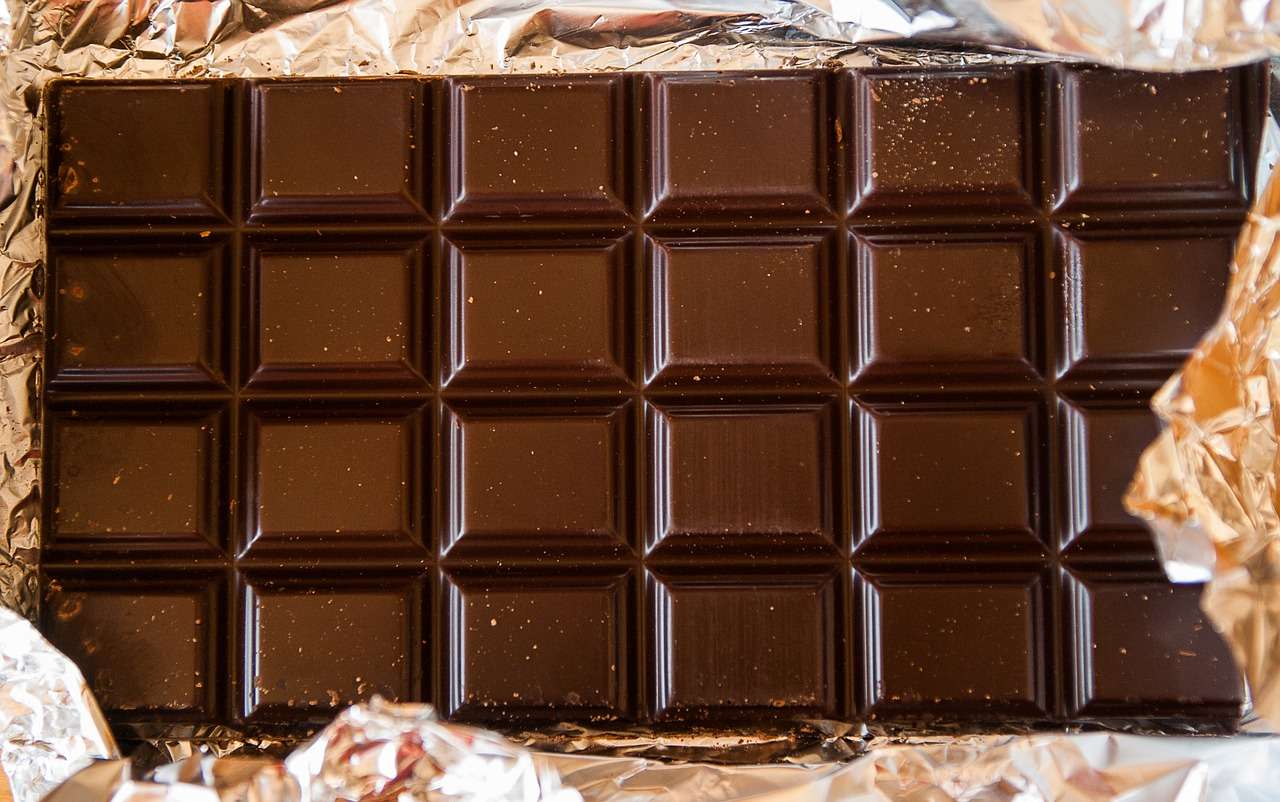Genesis
I had that annoying and shameful habit of falling asleep numerous times during screenings… My uncontrollable naps could last from five to forty-five minutes, and could even be filled with dreams. Very unhealthy sleep habits, boring and uninteresting screenings, and a dark room did not help. When I was lucky, my naps would remain unnoticeable, and my brain would wake me up right before the lights were turned on once the screening was over. When I was not, I would wake up a bit too late, or my body would make me do sudden moves easily, noticeable even in the dark, to wake me up. Not the best behavior from a film student…!
The article you are about to read is the final assignment I had to hand on during my last year at Concordia University, within the scope of the course FMST335-A – Cuban Cinema and Media, course given by Irene Rozsa for the Film Studies program and Mel Hoppenheim School of Cinema department in the Faculty of Fine Arts of the university in Montreal, Canada.
The assignment had to deal with post-revolutionary Cuban cinema, and Fresa y Chocolate was one of the only films that did catch my attention in a way I had known way before (being attracted to the handsome and charming character of David also helped), and as a result, prevented me from falling asleep.
Introduction
Tomás Gutiérrez Alea and Juan Carlos Tabío’s Fresa y chocolate “Strawberry and Chocolate” was released in Cuba in 1993, about thirty years after the socialist revolution led by Fidel Castro took place in 1959 (Political chronology and Rozsa), and if Gutiérrez Alea’s film promotes an atmosphere focused on socialism and the impact of the revolution among the Cuban population, several other themes and concepts are also taken into consideration and explicitly represented in the film such as gender, love, sexuality and the arts.
The action of the film takes place in Havana in 1979, when the revolution was a bit more recent in the Cuban population’s mind, and both the film’s storyline in the late 1970s and its production in the early 1990s were made at a time of general utopia in the Cuban society, which according to Juan Antonio García Borrero, constituted, in the case of the early 1990s, a certain enthusiasm from Cuban filmmakers concerning the post-revolutionary success of the Instituto Cubano del Arte e Industria Cinematográficos “Cuban Institute of Cinematographic Art and Industry” (ICAIC) as an institution, which was created when Castro’s revolution broke out in 1959, and was considered the starting point of a longed-for will from Cuban filmmakers to create their own national cinema in terms of art and industry (García Borrero). That common utopia was also promoted by an artistic renovation in the late 1980s led by institutional and sociopolitical changes (Sánchez-Nicolás).
My essay will be based on the analysis of Gutiérrez Alea and Tabío’s film, which focuses on utopia and disillusionments, and the notions of revolution and freedom. My analysis will aim at comparing how these four concepts are illustrated in the film, both from a textual point of view, that is to say, the ways they are represented through the characters, storyline and mise-en-scène, and applied to 1979 Cuba from a cultural, political, and social perspective, and from an extratextual point of view, that is, the reflection of the utopia, disillusionments, revolutionary aspect and artistic freedom present in the mind of Cuban artists and filmmakers in the early 1990s. I will thus explain in what explicit and implicit ways the idea of revolutionary utopia and disillusionments, as well as the contradictory notion of personal freedom are depicted in Gutiérrez Alea and Tabío’s Fresa y chocolate “Strawberry and Chocolate”.
To answer this problematic, I will divide my essay into three parts related to the presentation of one notion illustrated by textual examples from the film, and examples from García Borrero’s thesis. The first part will deal with the representation of post-revolutionary youth emancipation through the characters of David and Miguel, with emphasis on David’s cultural, political and social metamorphosis. The second part will answer the ideas demonstrated in the first part by focusing on the counterrevolutionary utopia created through the themes of arts, love, and sexuality and staged through the characters of Diego and Nancy, and their influence on David. Finally, the third and last part will explain how the arguments stated in the first and second parts respond to revolutionary disillusionments and the contradictory notion of personal freedom so much praised by David and Diego individually.
David and Miguel: the representation of post-revolutionary youth emancipation

In this part, I am talking about the term “revolutionary” in its historical sense and meaning in Cuba. Thus, referring to the representation of post-revolutionary youth emancipation in the film deals with the social emancipation of young Cubans after Castro’s 1959 socialist revolution. The socialist side of the revolution, that is, the revolutionary side promoted by the Revolution, is explicitly depicted in the film through the characters of David and Miguel. Both characters are young academic students and roommates studying in Havana, and who keep promoting the greatness of socialism and the revolution for Cuba, and especially the younger generations of Cuban students who claim they have ‘finally’ acquired freedom in their country. However, we realize how firmly David and Miguel are attached to their socialist opinions as the film progresses, and as David meets Diego, who will be the starting point of his metamorphosis.
By 1979, at the time the action takes place, Castro’s government tended to establish very cordial relations not only between Cuba and the Communist Soviet Union, but also between Cuba and the United States, and that year also marked the election of Castro as President of the Non-Aligned Movement (NAM), (Ahmed and Political chronology) which would prevent Cuba from forming any alliance with or against a major political force, such as the capitalist United States and the communist Soviet Union, at the peak of the Cold War between both countries, and a time when the world was torn apart between two ideologies.
If the character of Miguel’s opinions would grow stronger as he realizes David is metamorphosing, the latter would see his life take an unexpected turn when he meets Diego, and their growing conversations and relationship would not only be the focus of the film’s storyline and ideological significance, but also the embodiment of several revolutionary aspects that struck Cuba and the rest of the world from an artistic, cultural, historical and social point of view.
Diego and Nancy: a counterrevolutionary utopia
David’s encounter with Diego occurs at an unexpected moment in David’s life, though at the beginning of the film, when David is quietly eating an ice-cream at a café. Diego sits down at David’s table asking him permission with an indirect question: “May I?” and in the way he starts the conversation with David, who shows some signs of annoyance, the spectator immediately understands that he is a counterrevolutionary, that is, opposed to Castro’s socialist revolution. What seems to be an ‘innocent’ line in the film, yet a line which is the basis of the film’s general meaning and title, occurs when Diego is talking about the pleasure and rare privilege of eating a strawberry ice-cream, which is, according to him, a ‘delightful’ ingredient that is soon to be exported, thus leaving the Cuban population with only water and sugar to enjoy. A little older than David, Diego manages to find an excuse saying he has photographs of David in his apartment to bring him to his place, and the spectator, who finds himself in the position of David, realizes the full meaning of the term “counterrevolutionary” when he discovers Diego’s place and personality.
If Diego’s rebellion against Castro and his revolution is explicitly depicted in the films through Diego’s lines, his acting, his personality, and the way he treats David throughout the film, he reveals his counterrevolutionary ideals regarding the arts, and the free expression of love, sexuality and his own self. Diego’s hundreds of artistic decorations at his place are the first thing both David and the spectator notice when David is brought there. The walls are covered with various artistic works such as sculptures, paintings, photographs, posters, letters, and several other kinds of decorations reminiscent of the History of Cuba and the world. Another twist in the storyline occurs when Diego’s planned exhibition at a museum is cancelled. Such a refusal is seen by Diego as a refusal from the state to let him be himself, and live through his love for the past arts, and for pre-revolutionary Cuba. At the beginning of the film, David is rather reluctant to engage in a more profound conversation with David, but as the film progresses, he realizes how down-to-earth Diego is, and that he seems to be a respectful man who is only strongly attached to his artistic, cultural, social, and political opinions. Diego’s counterrevolutionary personality is also noticeable through his acting, which enables David and the spectator to understand his homosexuality, which also helps him educate younger men like David on the History of Cuba and the rest of the world, and all the facets of sexuality, with love.
In the first place, we could say that Diego’s counterrevolutionary ideals make him the controversial aspect of the storyline, and a potential threat for David, but comedy and irony are inserted into the narration, in a manner reminiscent of Gutiérrez Alea’s 1962 post-revolutionary film Las doce sillas “The Twelve Chairs” in which both political sides of the revolution are ‘happily’ reunited in a common journey of discoveries of the History of Cuba for the characters onscreen and the spectator through cinema, and art in general (Gutiérrez Alea). Irony is used in the film when Diego proposes a drink to David and offers him to “toast with the enemy”. His counterrevolutionary personality, which appears to be somewhat aggressive at the beginning of the film, gets smoother and smoother and the comical and ironic aspect of his (and the actor’s) acting appeal to David, who becomes a close friend of Diego as the storyline progresses. At the beginning of the film, we could also think that Diego does not feel like he belongs to Cuba anymore, but his reaction at the end of the film when he is told by the state to leave the country because of some offensive letters he wrote to the government for not allowing him to present his exhibition along with his German friend and artist, he becomes enraged and shouts to David his love for Cuba.
Throughout the film, the spectator is thus brought up to believe that the arts and the freedom to choose our own sexual orientation reveal a certain utopia of pre-revolutionary Cuba, yet, David’s position counterbalances the tendency of the film to act in favor or against one particular political side, which indirectly refers to the artistic utopia created by the “Cuban Renaissance” recently lost in the early 1990s and which promoted the importance of art, dialogue, and the importance of professional artistic institutions (Sánchez-Nicolás), that Gutiérrez Alea and Tabío might have wanted to recover through his film (García Borrero).
David and Diego: revolutionary disillusionments and the contradictory notion of personal freedom
The film treats the terms “revolution” and “revolutionary” in different ways that resemble and/or oppose each other. One of the possible meanings through the notion of revolutionary disillusionments refers to Diego’s opinions about Castro’s socialist revolution, which acts as the result of revolutionary disillusionments for him who has always wanted to express himself through the arts and his sexuality. To him, revolutionary disillusionments have struck all non-socialist Cubans who must hide, like himself, in order to live the life they want.
In the film, Nancy (Diego’s friend) is constantly reminding Diego to speak low, as his counterrevolutionary ideals could be heard in the house and could therefore have him arrested. Another interpretation behind the notion of revolutionary disillusionments could join the first one and counterbalance the fact that Diego’s opinions are revolutionary in their own way, as they act against the socialist state of Cuba, and seem to be resulting in a separation between Cubans, generally, between the older and younger generations of Cubans. Moreover, Diego’s impact on David throughout the film from an artistic, cultural, political, sexual, and social point of view seems to weaken David’s initial socialist opinions as he becomes a close friend of Diego and lets himself be influenced by his ideals and provoke some revolutionary disillusionments from David’s side as well, who thought, like Miguel and other young Cubans, that Castro’s revolution was ‘the best thing that happened’ to Cuba.
As the spectator follows the story from David’s point of view since the beginning of the film, the storyline tends to promote the notion of personal freedom as being related to Castro’s revolution and the advantages of a socialist state for Cuba and the younger generation of Cubans. As David tells Diego when he talks about how ‘great’ it is to be a socialist: “We have the right to do what we want with our lives.”, and later, “Communists are not savages.” However, the notion of personal freedom can be seen through various angles in the film that contradict each other. The spectator is torn between two political views of the revolution, and two ways of living, and both filmmakers are being ‘careful’ at promoting the notion of freedom through both sides. As the filmmakers choose not to engage in or discredit one side, the spectator is brought up to reflect upon what the terms “revolutionary” and “freedom” mean to him. Some would relate the notion of “revolutionary” to the strict historical sense, others would define Diego’s personality as being more “revolutionary” than David’s. The freedom so claimed by David and socialist Cubans could also be seen, by certain spectators, as the result of an indoctrination of youth by Castro’s ideals, which promote the fact that a socialist state is a free state, and that the people who are against those ideals are not really Cubans. An example highlights this point, when Diego is talking to David about some artistic achievements of old Cuban artists, asking him: “Aren’t they Cubans?”. Then, David hesitates and does not answer him. If the plot itself makes the character of David understand and respect Diego’s opinions as the film progresses, and especially at the end when he asks Diego for advice when we starts to write, Diego’s influence is noticeable early in the film, during the second encounter between both characters, and thus threatens the notion of freedom strongly praised by David when the latter apologizes to Diego for his ‘rude’ behavior on the first day they met, and tells him: “This is what I am, the other day I wasn’t myself”, a line which once more could reflect how the young generation can be easily influenced on the notions of revolution and freedom.

Conclusion
The History of Cuba and Fidel Castro’s socialist revolution is thus extremely present in the arts and in Cuban cinema promoted by ICAIC. The concepts of revolution, freedom and utopia are explicitly depicted and constantly refuted with textual examples including the storyline, the mise-en-scène and genre in Gutiérrez Alea and Tabío’s film to present the reality of post-revolutionary Cuba from 1959 to 1993, and are the implicit reflection of what the Cuban society has become in thirty years, and how the idea of a national Cuban cinema was received.
Sources
Author: Margaux Soumoy
Article
“Political Chronology”. Cuba, pp. 344-345
Lectures by Irene Rozsa within the scope of the course FMST335-A – Cuban Cinema and Media, Concordia University, Sept.-Oct. 2017
García Borrero, Juan Antonio. “Confiscated Utopia (from the gravity of dreams to the lightness of realism)”. Studies in Hispanic Cinema, vol. 9, no. 2, 2012, pp. 121-136
Sánchez-Nicolás, Darien. “Origins of Independent Cuban Audio-Visual. The Cinema and Video Workshops of the Asociación Hermanos Saíz (A.H.S) 1987-1993”. Presentation for the course FMST335-A – Cuban Cinema, Concordia University, 24 Nov. 2017
Ahmed, Samina. “Cuban Foreign Policy Under Castro”. Pakistan Horizon, vol. 33, no. 4, 1980, pp. 50-83
Gutiérrez Alea, Tomás. The Viewer’s Dialectic, Editorial José Martí, 1988, pp. 108-129
Film
Fresa y chocolate “Strawberry and Chocolate”. Directed by Tomás Gutiérrez Alea and Juan Carlos Tabío, performances by Jorge Perugorría and Vladimir Cruz, ICAIC, 1993
Images
